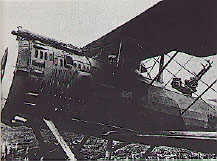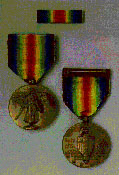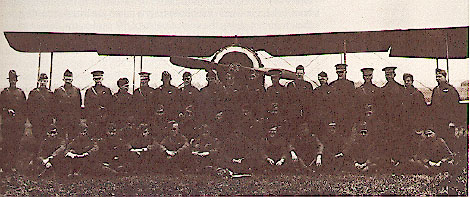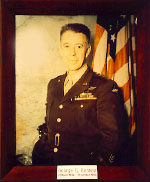|
History Notes Chapter 1, Page 2 of 2 World War I: The Birth of Aerial Observation |
||||||||||||||||
| The primary purpose of the 91st Squadron was to gather information and immediately return to base to report it, not to fly over the battlefield looking for planes to shoot down (or get shot at themselves). Obviously, the unit’s success can not be measured by number of aircraft shot down or total hours flown. Yet, over the course of its observation missions, the squadron did engage in 139 aerial combats and brought down 21 enemy planes during the over 1,000 hours it flew behind enemy lines. |
||||||||||||||||
| The 91st formed part of the First Army Observation Group and was "the only experienced and well-equipped unit in the Group." (7) It flew observation and penetration missions as deep as 50 miles behind the German front, and at altitudes below 3,000 feet, in carrying out its missions. After the war, air war students believed that these low-flying patrols operating throughout the offensive, in spite of bad weather, proved the "outstanding success" of the campaign. (8) |
 |
|||||||||||||||
|
91st Observation Squadron (6) |
||||||||||||||||
| The unit’s work between 3 June through 11 November 1918 included the following: (9) Confirmed Enemy Aircraft Destroyed: ----------------- 21 |
||||||||||||||||
|
French Croix De Guerre Right: U.S. World War I |
||||||||||||||||
 |
 |
|||||||||||||||
 |
||||||||||||||||
|
|
||||||||||||||||
| After the armistice ending World War I was signed, the 91st stayed in Germany until the summer of 1919 as part of the American Army of Occupation on the Rhine.
One of the 91st’s Commanders during this period was 1st Lt George Kenney. Lt Kenney would stay in the Air Corps after the war and later become the Commander of the Far East Air Force during World War II. General Kenney became General Douglas MacArthur’s air commander in his island hopping campaign in the Pacific and after World War II became the first commander of the Strategic Air Command. |
||||||||||||||||
|
Lt. George C. Kenney Right: General George C. Kenney, |
 |
|||||||||||||||
 |
||||||||||||||||
|
Attributions 6. Bloodt April...Black September, Norman Franks, Russell Guest and Frank Bailey, Grub Street, The Basement, London England, 1995, page 218. 7. The History of the Air Force, David A. Anderton, Crescent Books, New York, 1981, page 27. 8. A History of the United States Air Force 1907-1957, Alfred Goldberg, Van Norstrand Company, Inc., Princeton, New Jersey, 1957, pages 26-27. 9. 91st SRS Unit History, George M. Horn, 1949. 10. 91st SRS Unit History, Sgt. Irvin Janofsky, 1957. 11. Mauer and Mauer, Vol III., Page 19. |
||||||||||||||||
|
End of Page 2 of 2, Chapter 1 go to Chapter 2 Cover — Table of Contents — Introduction Chapters — 1 — 2 — 3 — 4 — 5 — 6 — 7 |
||||||||||||||||